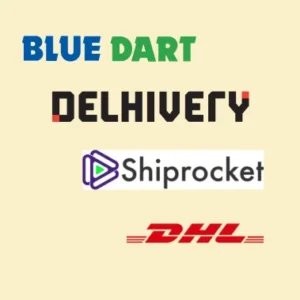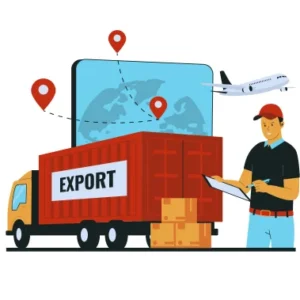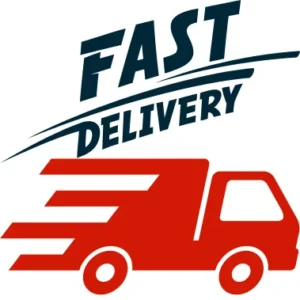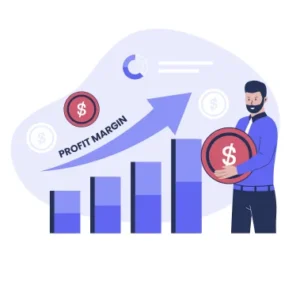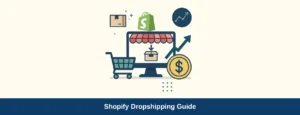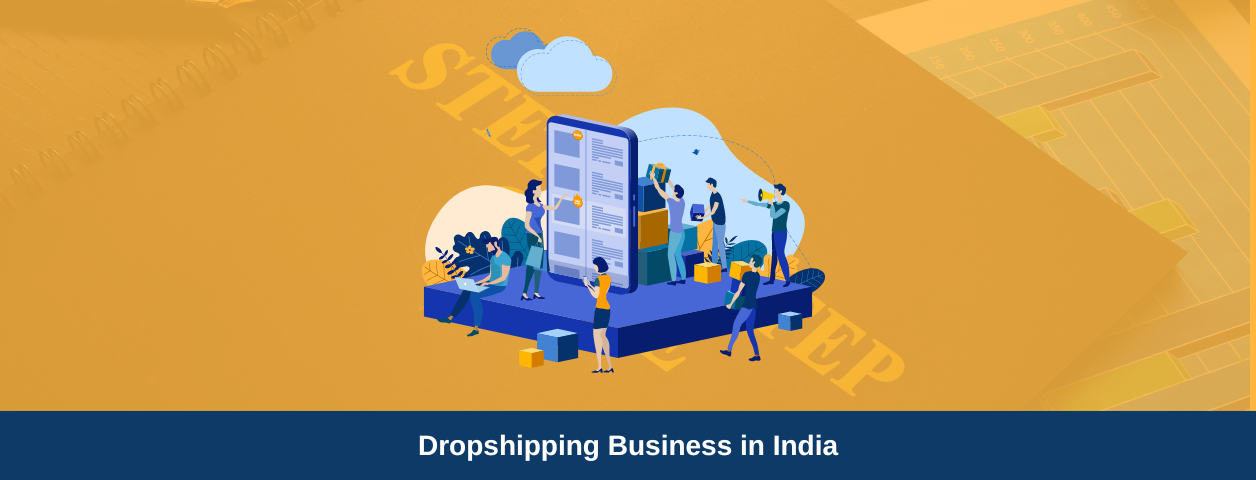Did you know which is a critical part of the e-commerce business?
Shipping is critical to customer experience. In today’s fast-paced world, fast, efficient, reliable, and cost-effective shipping is necessary for customer satisfaction.
According to statistics, 48% of online shoppers abandoned their carts because of extra shipping costs, taxes, and fees.
51% of Gen Z and 49% of Gen X are willing to wait for up to seven days to receive international free shipping.
Also, 72% of people purchase online because of free shipping, and 39.50% of Online shoppers expect discounts and special shipping coupons.
So, in this blog guide, we explore how shipping works, understand its core elements and discuss the best strategies for creating a smooth and seamless shipping experience that keeps customers happy and coming back for more.
Key Takeaways
📌 Fast, reliable, and affordable shipping directly impacts customer experience.
📌 Offering free shipping can significantly increase sales and reduce cart abandonment.
📌 Proper packaging protects products, reduces damage, and creates a solid first impression, contributing to a better customer experience and brand perception.
📌 Using strategies like bundle selling, custom tracking portals, and managing return orders efficiently can help reduce shipping costs, improving profitability without sacrificing customer satisfaction.
📌 Combining different shipping options helps balance customer needs and business profitability.
Understanding Core Elements Of
E-commerce Shipping
Shipping options:
Offering different shipping options can significantly change your business in today’s competitive market. There are plenty of shipping options available to fulfil various customer needs.
- Free shipping is an increasingly popular feature in online shopping. This simple pricing structure can become a competitive advantage for businesses such as Amazon Prime.
- Expedited service means it’s faster than standard shipping services for customers who prioritize speed over cost.
- Same-day delivery can be a game changer in the e-commerce business. Customers will receive their orders on the same day they place them.
Packaging:
It’s the first step in a smooth shipping process. The right packaging not only ensures safety but also plays an important role in branding and customer experience. Also, packing is a direct interaction with your brand. Customized packaging with your brand logo, colours, and style can create the best impression among customers.
Shipping costs:
Shipping costs are an essential factor in the success of any e-commerce business. They impact your profit margin and influence customer satisfaction.
Studies show that 70% of shoppers show interest in complete purchases with free shipping offered.
Effectively managing shipping costs is critical to maintaining a healthy profit margin while keeping customers happy.
Shipping Carriers:
Choosing the best shipping carrier partner is important in an e-commerce business because it will impact customer satisfaction and delivery speed.
Many carriers are available for different business needs. Here are some major carriers that can help your e-commerce business by providing the best shipping services.
- Blue Dart Express,
- Delhivery
- DTDC,
- Xpressbees,
- FedEx Corp,
- DHL,
- Shiprocket,
- Indiapost and more.
International shipping:
Expanding your business to international markets can help your brand grow globally. To successfully ship products internationally, it is important to understand import and export regulations, customs, paperwork, and common shipping restrictions.
Delivery speed:
Delivery speed is a crucial element of e-commerce shipping for customer satisfaction. Setting a reliable delivery timeframe is also essential for building trust with customers.
Brands can follow best practices by providing an estimated delivery date and allowing customers to choose their delivery methods with order tracking options.
In this business especially, the demand for faster delivery options is rising, with more customers expecting packages to arrive within 24 hours or even the same day.
How is shipping calculated?
Several factors determine the final price of shipping an item from one location to another. Here are the common factors to consider when calculating shipping prices.
1. Product dimensions and weight
Weight and dimensions are the primary factors in calculating shipping prices. It determines your average order weight and shipping amount. The more a package weighs and the larger it is, the more it will typically cost to ship.
2. Shipping address
The shipping address is another critical factor in determining the cost of shipping. The more distant the delivery location is, the higher the shipping rate to deliver the products.
- In domestic shipping, carriers structure prices based on zones, which is the distance between origin and destination.
- International shipping costs more because of the longer distance. It also includes customs clearance fees, import duties, taxes, and more.
3. Shipping mode
Over 68% of shoppers believe that having shorter delivery times available at checkout is the main reason they decide to buy something. There are 2 essential modes of shipping available for e-commerce business.
- Air Mode (Air Freight/Express Shipping): This mode ships products via aeroplane, and it’s typically faster for international deliveries.
- Surface Mode ( Ground and Ocean Freight): This is a standard shipping mode that takes longer to deliver products than air mode.
Both modes have their own advantages and serve different needs, so choose your shipping mode based on how quickly products need to be delivered.
👉 Now, let’s see how shipping works with Qikink.
Get Same Day Fulfillment For Your Order
Place rush orders before 9 AM for same-day fulfillment with Qikink
ecommerce shipping with Qikink – print on demand, dropshipping service provider
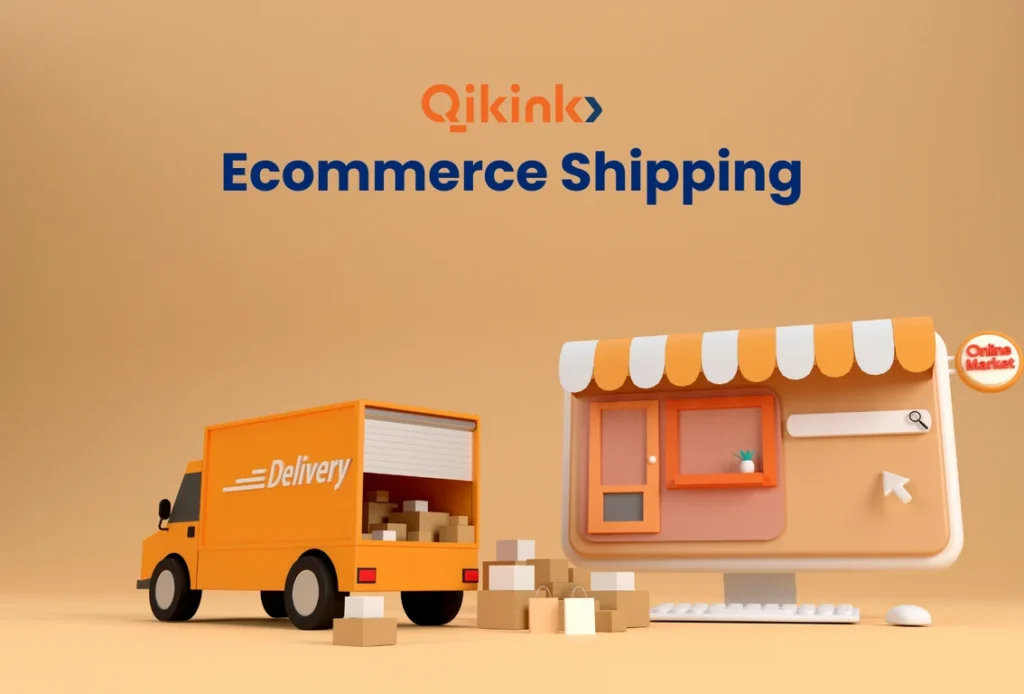
Qikink is a Print-on-Demand service provider that helps entrepreneurs start their e-commerce business without the hassle of inventory management. Here we share the shipping details for brands to build a profitable online business with complete shipping details.
Shipping methods we offered
Qikink shipping’s price is determined by the total weight of the products ordered. For every domestic order, Qikink charges a flat charge per 500 grams.
The Flat charge rate is a type of shipping, and the price is determined by the packaging, for example, a box.
Note: Flat shipping rates help eliminate the variations created by different dimensions, weights, and delivery locations.
Shipping Mode | Shipping price |
| Air Shipping | ₹63.7/500 gms (Incl. 18% GST) |
| Surface Shipping | ₹50/500 gms (Incl. 18% GST) |
| International Shipping | To the USA: ₹906/500 gms (Check for dashboard for pricing) |
| COD Orders | ₹40.12/ order (Incl. 18% GST) |
Add-On Services
Qikink offers excellent add-on services and other services for brands to increase their visibility. These services enhance customer unboxing experiences and encourage repeat purchases.
How can you save on eCommerce shipping costs?
Services | Price |
| Box Packing | ₹17.7 per product (Incl. GST) |
| Gift Packing | ₹47.2 per product (Incl. GST) |
| Custom letter | ₹47.2 per product (Incl. GST) |
| Neck Labels (1st Order) | ₹ 5,900 (Incl. GST) |
| Neck Label Refill | Free |
| Rush Orders | ₹ 52.50 (Incl. GST) |
| RTO Charges | Free |
📌 Please note that the GST for rush orders will vary based on the product’s GST.
1. Selling in bundles
Bundle selling is a marketing strategy in which sellers offer several products together as a package deal at a lower price than buying each item separately. By providing attractive deals, sellers help capture both casual browsers and eager-to-buy shoppers.
It reduces overall shipping costs by consolidating multiple items into a single shipment.
For example,
Shipping costs for 4 coasters and 1 coaster are the same.
You can also combine multiple products in shipping slabs of 500 grams, or 1000 grams
How bundling saves on shipping:
- Shipping a single bundle costs less than shipping multiple individual products.
- It reduces handling and packaging costs.
2. Custom-branded order tracking portal
Order tracking portals reduce customer queries about shipping and increase customer satisfaction. Hence, keeping your customers in mind, we created a white-label order tracking page for your store. With this page, customers can easily track their orders under your brand logo. It enhances your brand’s credibility and provides a seamless customer experience.
How a Tracking Portal Saves on Shipping Costs:
- Reduce customer inquiries
- Automated Notifications
- Encourage repeat business.
3. Manage your return (RTO) orders efficiently
Brands can easily manage products with Qikink’s effective RTO process. Qikink stores all your returned orders in its facility for 100 days to help you utilize them efficiently. They are stored product-wise so that you can re-ship them to your customers within 100 days.
Qikink understand the challenges online sellers and brand owners face
Fear no more! We don’t charge for RTO orders anymore!
4. Packaging materials
20% of product returns were due to damaged products. Product damage during shipping is expected in e-commerce businesses, with an average damage rate of 2-5%. It happens because of poor packing, rough carrier handling, and exposure to temperature variations.
In an e-commerce business, efficient packing not only protects you from damage but also impacts your shipping costs.
Qikink uses appropriate packaging materials to minimize such damages, as well as properly secure and cushion items. All accessories are bubble-wrapped and cling-wrapped to ensure the safe delivery of orders to your customers. We also use fragile stickers on products to inform the courier companies about the secure handling of orders.
5. Ship as a gift
Shipping a product as a gift can reduce the complexity and cost of returns. By shipping items directly to recipients as gifts, you can reduce the number of items returned or exchanged, as recipients are less likely to send them back compared to the original buyer.
Customers may purchase larger bundles for gifts, which will increase the total cart value while still allowing for cost-effective shipping for larger orders.
Why affordable Print On Demand shipping costs are important?
Affordable shipping costs are an essential factor in Print-on-Demand Business. The cost of shipping significantly impacts profitability, customer satisfaction, and overall business sustainability. Here are the reasons why POD shipping costs are essential.
👉 Impact on Profit Margin:
Customers expect to see clear and reasonable shipping prices upfront. Unexpectedly high shipping costs can lead to cart abandonment or customer dissatisfaction.
👉 Attracting Global Customers:
Offering affordable shipping can be a crucial differentiator in a crowded POD market. Customers are more likely to choose a business with reasonable or lower shipping fees, especially when comparing similar products across different platforms. Also, Affordable international shipping is crucial if you’re expanding your POD business globally.
👉 Customer satisfaction:
When customers see that your shipping fees are consistent and reasonable, they are more likely to trust your brand, leading to higher conversions and better long-term relationships.
If there are significant shipment delays, as long as you’re trying to keep your customers informed, they’ll understand.

4 eCommerce shipping strategies that work wonders
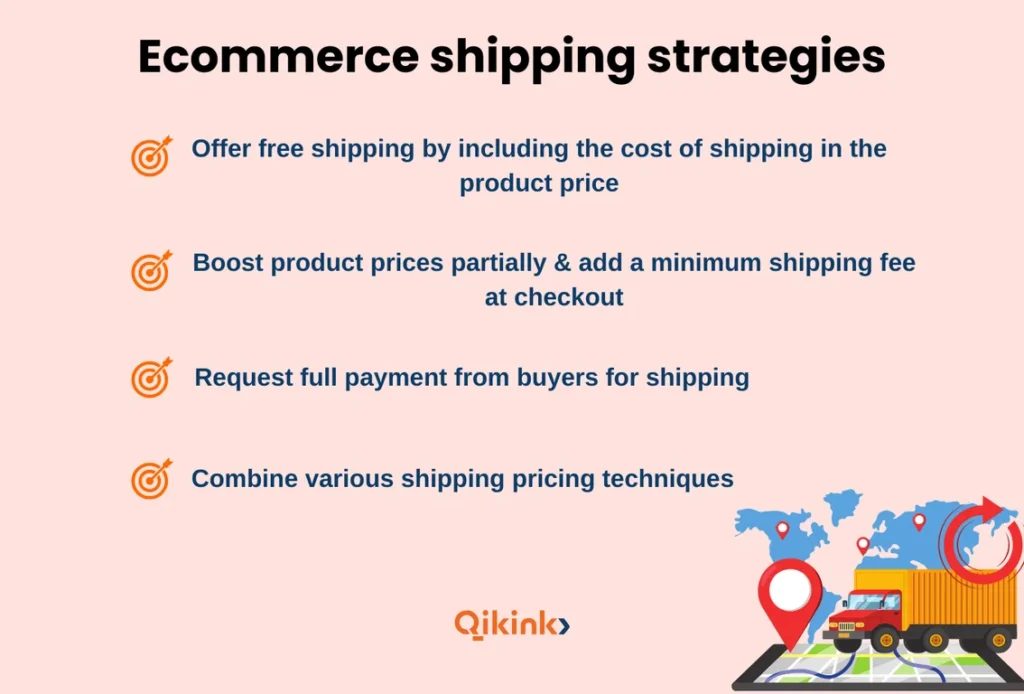
The correct shipping strategy not only makes your products more attractive but also ensures you maintain healthy profit margins. Moreover, how you structure your shipping costs can have a direct impact on your sales, customer satisfaction, and profitability. Here are four effective shipping strategies that can help you optimize costs and improve customer experience:
1. Offer free shipping by including the cost of shipping in the product price
According to statistics, Businesses that offer free shipping have a 20% higher conversion rate than those that do not. When customers see free shipping, they are less likely to abandon the cart.
By including the cost of shipping in the product price, you can cover the shipping fees without customers feeling like they are being charged extra.
This can be especially effective if your products are relatively inexpensive and small price increases won’t significantly impact consumer behaviour.
Here are we share ideas and approaches you can consider for offering free shipping while maintaining profitability and keeping your business financially sustainable:
👉 Increase the base price of your products to offer free shipping
👉 Encourage larger purchases by offering free shipping on orders over a specific threshold
👉 Attract new customers by offering free shipping on their first order.
👉 Encourages customers to shop for specific products that align with your business goals
👉 Offer free shipping during holidays and special events.
👉 Free shipping can be used as a strategy to recover abandoned carts by sending reminder emails.
👉 Encourage customers to follow your brand and share your content on social media by offering them free shipping as a reward for engagement.
2. Boost product prices partially & add a minimum shipping fee at checkout
Free shipping is not always feasible for high-cost and bulk orders. To cover the cost of shipping, increase the price of your products while adding a small shipping fee at checkout. This approach allows you to manage shipping costs while still offering customers the feeling that they are getting a good deal. You can increase the product price slightly and charge a small, flat-rate shipping fee at checkout.
3. Request full payment from buyers for shipping
Some e-commerce businesses prefer a direct approach to shipping by charging the total price of shipping.
Customers pay for the exact cost of shipping based on their order, location, and delivery preferences. There are no hidden fees, and customers understand exactly what they’re paying for.
4. Combine various shipping pricing techniques
A one-size pricing rarely works for different customers and segments. Combining various shipping prices is a strategic approach to increasing profitability.
👉 You can offer free shipping over a specific product range
👉 For small and lightweight products, you can use a flat rate shipping fee, and it works well on these lightweight categories
👉 You can offer different pricing based on distance and delivery locations.
👉 Offering discounted shipping to repeat customers can encourage customers to keep coming back.
Conclusion
Effective shipping strategies can help businesses increase their conversion rates, boost average order value, and improve customer satisfaction without impacting profit margins. Remember, Overpriced delivery costs may discourage buyers from making purchases.
On the other hand, if shipping costs are set too low, they may not be enough to cover handling and shipping expenses, which would reduce profits.
In the e-commerce business, customers expect transparent, predictable and positive experiences in online shopping.
By selecting the best strategy for your business model, product type, and customer base, you can find the right balance that works for both you and your customers.
Read More:
Frequently Asked Questions
What shipping options are commonly offered by online retailers?
Customers can choose from various shipping options when shopping online, including standard shipping, express shipping, same-day delivery, and free shipping. The availability of these options may differ depending on the retailer and the customer’s location.
How are shipping costs calculated in e-commerce?
E-commerce shipping costs are based on several factors, such as the package’s weight and dimensions, the shipment’s destination, and the selected shipping method. In addition, fees for insurance, handling, and taxes may apply.
What role does order fulfillment play in the shipping process?
Order fulfillment, which is a critical aspect of the shipping process, involves receiving, processing, and delivering customer orders. This includes managing inventory, selecting items, and preparing shipments for delivery.
Are there any best practices for optimizing e-commerce shipping operations?
To optimize e-commerce shipping operations, businesses should implement best practices such as selecting the most cost-effective shipping carriers, negotiating rates, optimizing packaging, and automating shipping processes. Other strategies include providing free shipping and estimated delivery dates to customers.
How do e-commerce businesses track and manage shipments?
E-commerce businesses utilize various tools and technologies like order management systems, shipping software, and tracking numbers to track and manage shipments. These tools allow businesses to monitor shipment status, provide real-time customer updates, and manage inventory levels effectively.





